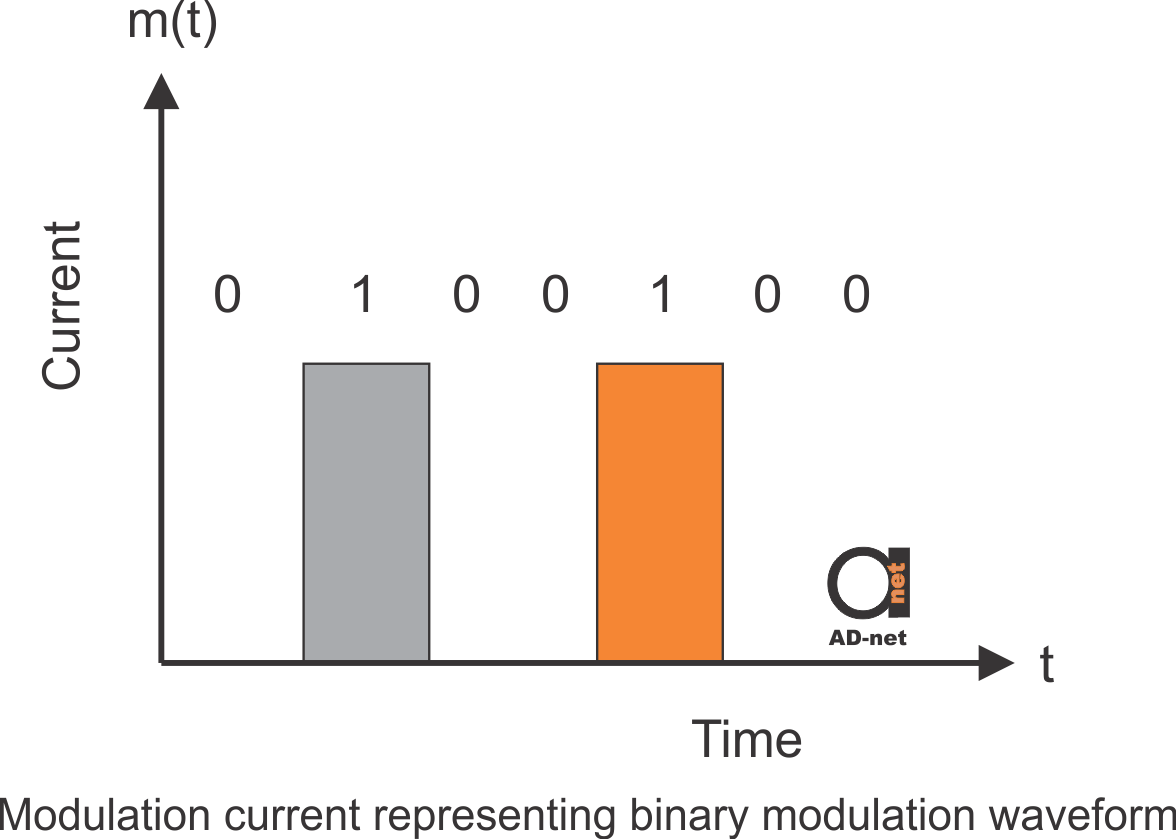Optical Modulation Techniques
2017-10-12
Modulation techniques are key elements when implementing large telecommunication networks with high throughput.
These techniques are specifically vital when systems are designed to operate at 10/ 40Gbps, as the performance of these systems degrade significantly due to the interaction between dispersion and the non-linearity of fiber. Optical modulation describes the controlled adjustment of the optical signal’s amplitude before its propagation through the network.

Figure 1: Optical Signal Modulation
A number of different schemes can be used to perform the modulation function. These include, among others, Return-to-Zero (RZ), Non-return-to-zero (NRZ), Sinusoidal Same Phase Modulation (SaPM), Alternate Mark Inversion (AMI) and Intensity modulation.
In older telecommunication systems that achieved data rates higher than 10Gbps, NRZ was often used. As the RZ technique caters for nonlinear effects, it is more appropriate at higher data rates.
Intensity Modulation is the simplest of the schemes mentioned. This modulation is also known as On-Off Keying (OOK) or Amplitude Shift Keying (ASK). The Intensity Modulation scheme is incoherent in that the receiving side detects the absence or presence of energy during the bit interval.
This scheme is often used for shorter distances and can be used with LD and LED sources. It is very effective with LEDs because it is incoherent. With IM modulation, the output of an optical source mirrors the binary input sequence.
Modern day telecommunication systems are complex and able to achieve high throughputs ranging from 10Gbps to 40 Gbps.
The characteristics of these systems are vastly different from their predecessors and they are highly reliable over wide ranges of working conditions.
This resulted in advanced research into optical modulation formats. Many of the modulation formats described in the previous section have been made obsolete by modern network requirements.
The requirements of fiber optic transmission are very different from those of CATV systems or microwave transmissions. None of the modulation formats can cater for all the different sources of performance degradation. A careful selection of advanced modulation formats will however improve system performance by reducing the effect of the major sources of performance degradation.
These techniques are specifically vital when systems are designed to operate at 10/ 40Gbps, as the performance of these systems degrade significantly due to the interaction between dispersion and the non-linearity of fiber. Optical modulation describes the controlled adjustment of the optical signal’s amplitude before its propagation through the network.

Figure 1: Optical Signal Modulation
A number of different schemes can be used to perform the modulation function. These include, among others, Return-to-Zero (RZ), Non-return-to-zero (NRZ), Sinusoidal Same Phase Modulation (SaPM), Alternate Mark Inversion (AMI) and Intensity modulation.
In older telecommunication systems that achieved data rates higher than 10Gbps, NRZ was often used. As the RZ technique caters for nonlinear effects, it is more appropriate at higher data rates.
Intensity Modulation is the simplest of the schemes mentioned. This modulation is also known as On-Off Keying (OOK) or Amplitude Shift Keying (ASK). The Intensity Modulation scheme is incoherent in that the receiving side detects the absence or presence of energy during the bit interval.
This scheme is often used for shorter distances and can be used with LD and LED sources. It is very effective with LEDs because it is incoherent. With IM modulation, the output of an optical source mirrors the binary input sequence.
Modern day telecommunication systems are complex and able to achieve high throughputs ranging from 10Gbps to 40 Gbps.
The characteristics of these systems are vastly different from their predecessors and they are highly reliable over wide ranges of working conditions.
This resulted in advanced research into optical modulation formats. Many of the modulation formats described in the previous section have been made obsolete by modern network requirements.
The requirements of fiber optic transmission are very different from those of CATV systems or microwave transmissions. None of the modulation formats can cater for all the different sources of performance degradation. A careful selection of advanced modulation formats will however improve system performance by reducing the effect of the major sources of performance degradation.
RECENT BLOG POST
-
012019-10With the continuous development of 5G communication technology, 100G modules are gradually becoming popular. We know that there are many kinds of packages for 100G optical modules. From 2000 to now, the optical module package types have been rapidly developed. Its main package types are: GBIC, SFP, XENPAK, SNAP12, X2, XFP, SFP+, QSFP/QSFP+, CFP, CXP. In the fast-developing network era, some 100G optical modules avoid the risk of being eliminated, and upgraded and revised with the wave of the Internet, such as 100G CFP optical modules.
-
012019-101. What is the CWDM SFP? The CWDM optical module is an optical module using CWDM technology to implement the connection between the existing network device and the CWDM multiplexer/demultiplexer. When used with a CWDM multiplexer/demultiplexer, CWDM optical modules can increase network capacity by transmitting multiple data channels with separate optical wavelengths (1270 nm to 1610 nm) on the same single fiber.
-
012019-10AOC is the abbreviation of Active Optical Cables, which is called Active Optical Cables in Chinese. AOC active optical is to encapsulate two optical modules and cable together. Because the medium of transmission in the middle is optical cable, AOC optical module, which contains laser devices, has a higher price for DAC. However, its optical aperture is not exposed, it has high reliability, and its working distance can be customized for a long distance of less than 100 meters.
-
012019-10Dense Wavelength Division Multiplexing (DWDM) technology is capable of transmitting data in an optical fiber using bit wavelength parallel transmission or string line transmission using the wavelength of the laser.It is widely used in different fields of communication networks, including long-distance backbone networks, metropolitan area networks (MANs), residential access networks, and local area networks (LANs).The DWDM optical module is the optical module that uses this technology, so the DWDM optical module has high bandwidth and long-distance transmission characteristics.












